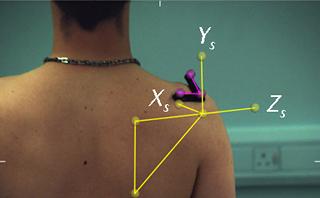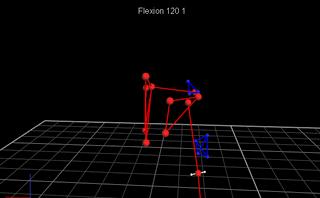To overcome the problem of the scapula gliding beneath the skin surface during measurement of scapular kinematics, various methods have been used including open Magnetic Resonance Imaging (MRI), adopting a quasi-static approach of manually digitising scapular landmarks or using a scapular locator (SL) device.
These methods are limited by cost and, perhaps more crucially, not providing dynamic movement data. In order to measure dynamic movement, a method was developed where an electromagnetic sensor is attached to the flat portion of the acromion. The acromion provides a flat surface with which to attach a sensor, or marker set, which has the least amount of skin movement artefact compared to other sites on the scapula. This method, however, has rarely been used to track dynamic movement of the scapula when using a passive-marker based motion capture device.
Such devices are common relatively in research environments due to their widespread use for gait analysis. Before the acromion technique can be used with these types of motion capture devices, the validity of the measurement must be examined. Assessing the validity of the measurements involves comparing measurement to an alternative generally accepted measurement technique, in this case static measurements, and assessing the reliability of the measurements.
The project aims to assess these potential sources of error and determine how this may impact on the outcome measure used to describe scapular movement. Through development of the kinematic model, which defines the scapula, the project aims to reduce the potential errors and provide clinicians with an easily interpretable outcome measure which is both reliable and valid.
Project team
Stokes M, Chappell P, Humphrey V, Warner M (PhD student),
Project funder
Vicon (Oxford) Ltd

